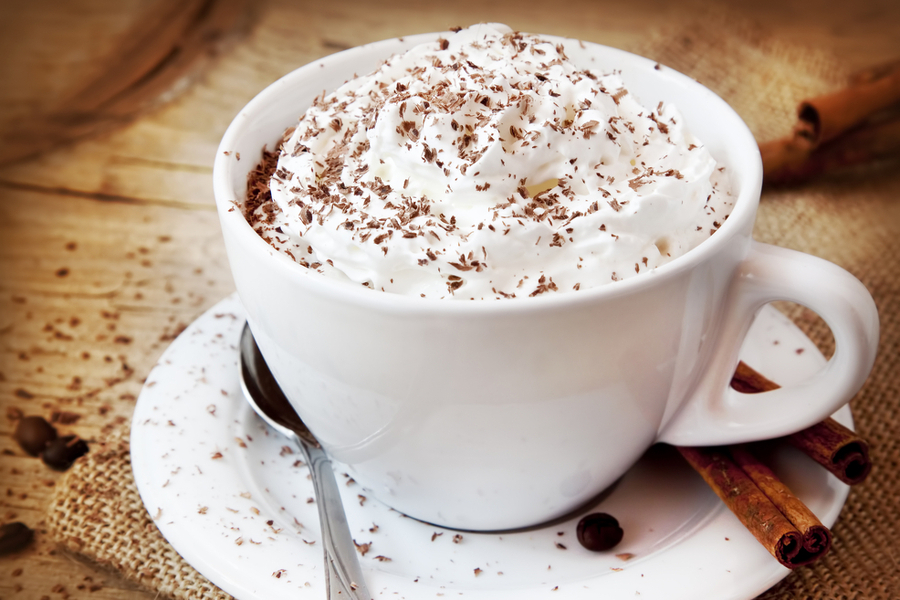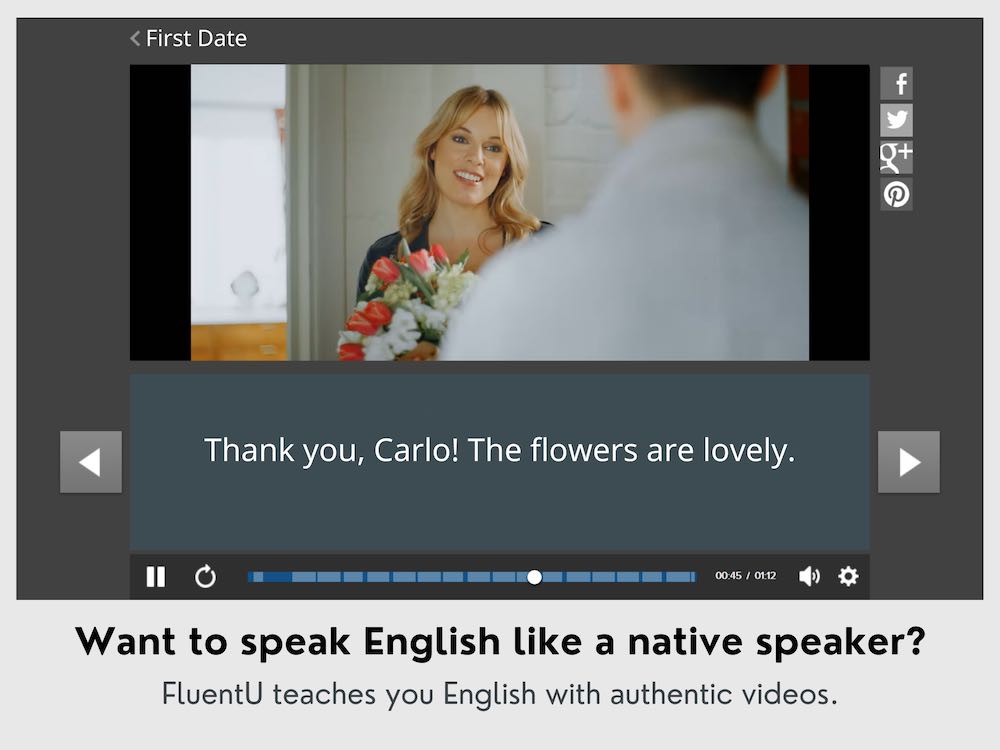
How to Order Coffee in English
Sometimes ordering coffee feels like learning a whole other language, but it’s absolutely necessary if you’re addicted to java (coffee).
It’s also a good way to kickstart your language immersion.
Being familiar with these basic English phrases and words before you walk through the door will help you order with confidence—and order something you actually like!
Contents
- How to Easily Order Your Coffee
- Common Questions You Might Be Asked
- A Practice Dialogue for the Coffee Shop
- Different Types of Coffee Drinks on the Menu
- Coffee Shop Etiquette to Consider
- And One More Thing...
Download: This blog post is available as a convenient and portable PDF that you can take anywhere. Click here to get a copy. (Download)
How to Easily Order Your Coffee
When you approach the counter, you’ll want to say more than, “Coffee, please.” Here are a few simple phrases to help you order your coffee like a local.
Ask about the cashier
(cashier answers)
“Great. Okay, I’d like a large black coffee to go, please.”
Basic and polite
“Hello. I’d like a small latte, please.”
Quick and informal
“Could I have a medium coffee to go?”
“Can I get a large mocha for here?”
“I’ll take a small coffee and a donut, please.”
Ask about the menu
“Hello. Do you have any low-calorie drinks?”
(cashier answers)
“Okay, I’d like a large green tea, please.”
Common Questions You Might Be Asked
Similar to ordering beer and wine in English, you usually have to specify a few details about your coffee order.
The cashier (the person who works at the coffee shop) may ask you the following questions. You can practice the responses below.
What size would you like?
You can usually answer with small, medium or large.
Would you like the 8-, 12- or 16-ounce size?
Or if you aren’t sure about how much that is, try just saying “the smallest” or “the largest.”
Anything else besides the drink?
Most places also offer things such as bagels, sandwiches and muffins.
Is that for here or to go?
A Practice Dialogue for the Coffee Shop
If you practice before your arrival, you’ll have more confidence when placing your order. Find a friend and make use of this simple partner dialogue.
Cashier: Hi there! What can I get for you?
Customer: Hello. I’d like an americano, please.
Cashier: Okay. What size would you like?
Customer: Sorry?
Cashier: What size?
Customer: Oh. A small, please.
Cashier: Okay, one small americano. Anything else besides the drink?
Customer: No, thanks. That’s all.
Cashier: And is that for here or to go?
Customer: For here, please.
Cashier: Your name, please?
Customer: Alex.
Cashier: Thank you. Your total comes to $4.49. Are you paying with cash or credit?
Customer: Credit. (Give the cashier the credit card.)
Cashier: Great. We’ll call your name when your order is ready. You can pick it up at the counter over there.
Customer: Okay, thanks!
Cashier: You’re welcome! Have a nice day.
Customer: You, too.
Want even more practice? Find a video on FluentU and follow along. The accurate subtitles make it easy to speak along with the people in the video, and you can find plenty of real examples of English speakers in various environments, like the coffee shop.
FluentU takes authentic videos—like music videos, movie trailers, news and inspiring talks—and turns them into personalized language learning lessons.
You can try FluentU for free for 2 weeks. Check out the website or download the iOS app or Android app.
P.S. Click here to take advantage of our current sale! (Expires at the end of this month.)

Different Types of Coffee Drinks on the Menu
Some coffee drinkers prefer black coffee without anything in it. If this describes you, you’ll have a relatively easy time ordering coffee!
If you like to explore other basic options, here’s a list of some of the common coffee drinks you’ll find in a coffeeshop or café.
Choose from basic options
- Black coffee classic coffee made by hot water passing through ground coffee beans
- Pour over similar to classic coffee, made by hot water poured over coffee beans and dripping down into a cup
- Cold brew similar to classic coffee, made by soaking ground coffee beans in cool water for a long time
- Decaf decaffeinated coffee (coffee with no caffeine)
- Espresso a small shot of coffee made in an espresso machine
- Americano espresso with hot water added
- Macchiato espresso with just a little bit of steamed (hot) milk
- Cappucino espresso with a smaller amount of steamed (hot) milkO
- Latte espresso with a larger amount of steamed (hot) milk
- Frappé espresso on ice, mixed with foamed milk
- Mocha a latte with chocolate syrup added
- Hot tea green tea, black tea, herbal teas, etc.
- Iced tea generally black or green tea, served cold with ice and lemon
- Lemonade a drink of cold lemon juice, sugar and water
- Italian soda carbonated water with flavors added, such as raspberry, strawberry or lemon
Add a little something
Looking for something more adventurous? In most coffee shops, you can add flavors to your drink.
These usually cost around $0.50 and are good additions if you like sweet drinks. Here are a few popular choices.
Consider a specialty drink
Many coffee houses have their own specialties, but here are a few trending, new and creative items on coffee shop menus, along with a short description of each.
- Dalgona coffee Also known as whipped coffee this drink is gets its name from a South Korean snack made of caramelized sugar. Instant coffee is used and whipped together together with other ingredients to create a foam. This is then poured over hot or cold milk.
- Matcha latte A creamy drink made with matcha, a fine powder of green tea leaves. Although it was difficult to find on the menu before, most coffee shops now offer several different types of matcha-themed drinks.
- Rooibos espresso It says “espresso,” but there’s no coffee in this drink. Rooibos espresso drinks are made from Rooibos tea, but they’re called “espresso” because they have a similar texture and appearance to normal espresso. This is a new type of drink that has become very trendy because of the health benefits of Rooibos tea.
- Golden latte This drink has no caffeine, no coffee and no tea. Another new drink that has become popular because of its health benefits, this latte is steamed milk with turmeric, ginger, cinnamon and other spices.
- Blended drinks A cold, thick drink made from espresso, ice and milk mixed together in a blender. Blended drinks usually have sweet flavors added (such as chocolate, caramel, mint or even pumpkin), and many coffee shops offer a featured seasonal drink.
Of course, this list is just a small sampling of the items you’ll find at a coffee shop. If you are or want to be a coffee connoisseur (expert), you can learn more English coffee terminology in this in-depth coffee glossary.
Coffee Shop Etiquette to Consider
If it’s your first time going to a coffee shop in North America, here are some notes to help you learn coffee shop culture.
The Smithsonian also has a short, informative video about the history of coffee culture in the U.S.
- In general, you’re expected to put sugar or sweetener (artificial sugar) in your drink after the cashier gives it to you. You can ask, “Where can I find the sugar/sweetener?” if you aren’t sure. Some drinks are already sweet, so there’s no need to sweeten them. It depends on your preference, of course!
- Often, the cashier will ask for your name. This is because the barista (the person making your coffee) will call your name out when your coffee is ready, so remember to listen for it. Sometimes, they say the order instead. For example, instead of saying “Alex?” the barista will say, “Large latte to go?”
- If you just ask for “coffee,” it’ll be brewed, black coffee. If you want espresso, you must order a coffee drink such as a cappuccino, latte, americano, etc, or “espresso” for a shot of espresso by itself. Ordering a double espresso or two shots of espresso, is also quite common.
- People are often in a hurry to get their coffee. If you need extra time to read the menu, step to the side of the line and tell the person behind you, “You can go ahead. I’m still deciding.”
- If you’d like to plug your laptop or phone into a power outlet, it’s good etiquette to speak to the person or people sitting close to the power outlet. Simply say, “Hi, is it ok if I plug in my laptop here? Thanks.” before you reach across their table or behind their chair.
With these phrases, you’re prepared to order your coffee with confidence.
And since you’re already going out for a drink, why not take advantage of the opportunity and practice English during your coffee break?
Enjoy!
Download: This blog post is available as a convenient and portable PDF that you can take anywhere. Click here to get a copy. (Download)
And One More Thing...
If you like learning English through movies and online media, you should also check out FluentU. FluentU lets you learn English from popular talk shows, catchy music videos and funny commercials, as you can see here:
The FluentU app and website makes it really easy to watch English videos. There are captions that are interactive. That means you can tap on any word to see an image, definition, and useful examples.
For example, when you tap on the word "searching," you see this:
Learn all the vocabulary in any video with quizzes. Swipe left or right to see more examples for the word you’re learning.

FluentU helps you learn fast with useful questions and multiple examples. Learn more.
The best part? FluentU remembers the vocabulary that you’re learning. It gives you extra practice with difficult words—and reminds you when it’s time to review what you’ve learned. You have a truly personalized experience.
Start using the FluentU website on your computer or tablet or, better yet, download the FluentU app from the iTunes or Google Play store. Click here to take advantage of our current sale! (Expires at the end of this month.)











